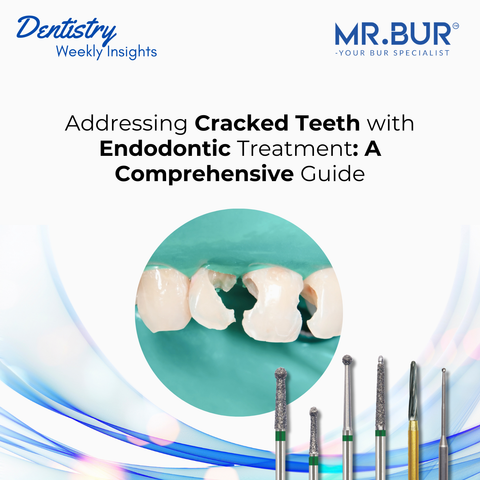Delivering optimal patient care often involves balancing both aesthetic appeal and functionality. One common issue that patients face after orthodontic treatment or due to aging is the appearance of black triangles between their teeth. These small gaps, also known as open gingival embrasures, can be both a cosmetic and oral health concern. Understanding their formation and how to treat them effectively is crucial in modern dental practice.
In this article, we will explore the causes of black triangles, how they form, and how Interproximal Reduction (IPR) can be used to reduce or eliminate them.
What Are Black Triangles Between the Teeth?
Black triangles refer to the small, triangular gaps that appear between teeth near the gum line. They occur when the gum tissue doesn't completely fill the space between the teeth, leaving a noticeable black space in the smile. These gaps are particularly noticeable in the anterior (front) region of the mouth, where aesthetics are most important.
In dental terms, these spaces are known as open gingival embrasures, and while they can be a cosmetic issue, they can also trap plaque and food particles, leading to gum irritation or disease.
How and When Do Black Triangles Form?
Several factors contribute to the formation of black triangles:
-
Gingival Recession: As gums recede due to factors like periodontal disease or aging, they may pull away from the teeth, exposing the spaces between them and creating black triangles.
-
Tooth Shape: Patients with teeth that are triangular in shape (wider at the biting edge and narrower at the gum line) are more prone to black triangles, as the contact point between these teeth is minimal, leaving larger gaps that the gums cannot fill.
-
Bone Position: When the contact point between two teeth is more than 5mm away from the underlying bone, black triangles are likely to appear because the bone and gum tissue cannot support the space.
- Orthodontic Treatment: After orthodontic treatment, such as braces or clear aligners, teeth are aligned, but if the patient’s teeth are triangular or if there has been gum recession, black triangles may become more pronounced. Teeth that were once crowded or overlapping may now reveal previously hidden gaps.
How to Reduce Black Triangles
Several methods can be used to reduce or eliminate black triangles:
-
Cosmetic Bonding: Composite resin can be used to fill in the black triangle, improving the smile’s appearance. However, this is a more invasive option compared to other methods.
-
Orthodontic Adjustment: In some cases, re-aligning the teeth using braces or aligners can help close the gaps. However, this depends on the size and shape of the teeth as well as the degree of the black triangles.
-
Gum Grafting: This surgical option involves grafting new tissue into the gum area to cover the gaps. While effective, it is a more complex procedure.
- Interproximal Reduction (IPR): A minimally invasive option, IPR involves removing small amounts of enamel from the sides of the teeth to reduce black triangles.
When to Use IPR for Reducing Black Triangles
Interproximal Reduction (IPR) is a conservative and highly effective method for treating black triangles, especially in cases where the gaps are small to moderate. During IPR, a dental professional carefully polishes the sides of the teeth, removing a small amount of enamel to adjust the contact points between adjacent teeth.
IPR is ideal for the following cases:
-
Mild to Moderate Black Triangles: IPR is best used for black triangles that result from slight misalignments, orthodontic treatment, or triangular tooth shapes.
-
Post-Orthodontic Treatment: After teeth have been straightened with braces or aligners, black triangles may remain. IPR can be performed to reduce these gaps without needing additional orthodontic treatment.
- Triangular-Shaped Teeth: Patients with triangular teeth, where the contact points between teeth are minimal, benefit most from IPR, as it can adjust the contact point and reduce the visible gaps.
IPR works well in conjunction with orthodontic treatments, such as Invisalign, to minimize or eliminate black triangles as teeth shift into place. By selectively reshaping the enamel, IPR allows for better space closure and promotes gum filling between the teeth.
IPR for Reducing Black Triangles: The Procedure Using IPR Burs
When performing Interproximal Reduction (IPR) for the purpose of reducing black triangles, the choice of tools is crucial to achieving precise and effective results. One of the most efficient ways to carry out IPR is by using IPR burs, which allow for controlled enamel reduction and better contact point adjustment between teeth.
For this procedure, Mr. Bur One Slice IPR Kit offer a highly specialized set of IPR burs designed to enhance precision and efficiency in creating smooth interproximal reductions gap. Mr. Bur One Slice IPR Kit includes 4 IPR burs for anterior teeth and 2 IPR burs for posterior teeth, ensuring the right tools are available for every section of the mouth. These burs are perfectly suited for gently removing minimal amounts of enamel, reshaping the sides of the teeth without causing damage or discomfort.
How to Use IPR Burs in the Procedure:
-
Selective Enamel Removal: The IPR bur is used to carefully polish and reduce the enamel between teeth, focusing on improving the contact points to close the black triangles. This precision helps to improve both the aesthetic and functional outcomes of the procedure.
-
Precision and Safety: Mr. Bur’s One Slice IPR Kit provides excellent control, ensuring that the enamel is only reduced where necessary without affecting the integrity of the tooth. With 4 burs tailored for anterior teeth and 2 burs designed for posterior teeth, the clinician can adjust the procedure based on the patient's tooth anatomy and the size of the black triangle.
- Post-Reduction Polishing: After the IPR bur has been used to reduce the enamel, the remaining rough edges are polished to smooth the surface, ensuring that the teeth fit together snugly and reducing the chances of plaque buildup between them.
By incorporating Mr. Bur’s One Slice IPR Kit into the procedure, dental professionals can perform precise interproximal reductions, improving both aesthetic outcomes and patient satisfaction. This minimally invasive approach helps to close gaps, reduce black triangles, and promote better long-term oral health.
Is IPR Safe?
A common concern regarding IPR is whether it weakens the teeth or makes them more susceptible to decay. IPR is completely safe when performed by a trained dental professional. Research has shown that after IPR, the enamel that remains is actually smoother than natural enamel, which can reduce the risk of plaque buildup.
Additionally, because only a small amount of enamel is removed (typically less than 0.5mm), the structural integrity of the tooth is maintained. The risk of sensitivity or tooth decay is also minimal, provided that good oral hygiene practices are followed after the procedure.
Final Thoughts
Reducing black triangles is essential for improving both the aesthetic and functional aspects of a patient's smile. Interproximal Reduction (IPR) offers a minimally invasive, effective solution to address these gaps, particularly after orthodontic treatment or in patients with triangular tooth shapes. By using specialized tools like the Mr. Bur One Slice IPR Kit, dental professionals can ensure precise enamel reduction and better contact points, resulting in enhanced appearance and oral health.
Incorporating IPR into treatment not only improves aesthetics but also promotes gum health, reduces plaque buildup, and maintains orthodontic stability. With the right approach and tools, IPR provides a reliable, conservative way to achieve optimal patient outcomes.
If you're seeking to address black triangles in your patients, consider using the One Slice IPR Kit for precise, effective results.
Explore More:
-
Biological and Biomechanical Impacts of Interproximal Reduction (IPR) Burs on Periodontal Health and Enamel Integrity: A Longitudinal Study
-
Step-by-step guide to Interproximal Bur Technique: The bur used for IPR
-
The Role of Interproximal Reduction (IPR) in Clear Aligner Therapy: A Critical Analysis of Indications and Techniques
- Unlocking Precision Dentistry: 10 Advantages of IPR Burs and Their Impact on Dentistry
Diamond Burs, Carbide Burs, Surgical & Lab Use Burs, Endodontic burs, IPR Kit, Crown Cutting Kit, Gingivectomy Kit, Root Planning Kit, Orthodontic Kit, Composite Polishers, High Speed Burs, Low Speed Burs






